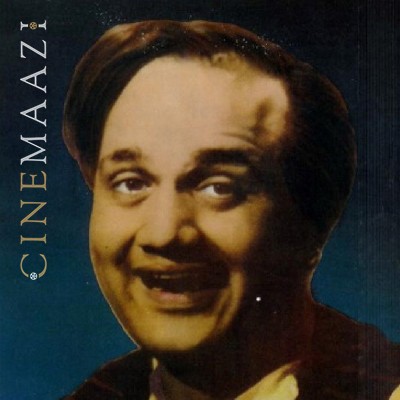Kamlakar Karkhanis
Subscribe to read full article
This section is for paid subscribers only. Our subscription is only $37/- for one full year.
You get unlimited access to all paid section and features on the website with this subscription.
Not ready for a full subscription?
You can access this article for $2 , and have it saved to your account for one year.
- Primary Cinema: Hindi
A reputed film editor known for his work over the span of five decades, Kamlakar Karkhanis left behind a legacy of stellar films, ranging from swash-buckling B film spectacles to critically acclaimed films like Hum Paanch (1980).
Very little is known about Karkhanis’s personal life. While it cannot be confirmed, he possibly started his independent editing career with Vijay Bhatt’s 1942 hit Bharat Milap. He is also credited as the director of a 1948 film called Jalsa, starring Geeta Bali and Shyama, under the name Kamalakar. Through the ’40s and 50’s he worked in the B film circuit – working in classic fares like Aladdin and The Wonderful Lamp/Aladdin Aur Jaadui Chirag (1952), Sinbad The Sailor (1952), Alibaba and Forty Thieves (1954) and Talwar Ka Dhani (1956). He was the editor of Homi Wadia’s Gevacolour version of Hatim Tai (1956) starring P Jairaj, B M Vyas, and Shakila. He edited Homi Wadia’s Zimbo (1958) which was the first of a popular trilogy. He had become an expert in handling the genres of fantasy and action by this point. He continued working in these genres with films like Banjarin (1960) and Zabak (1961).
In 1962 he worked with Dwarka Khosla on the Feroz Khan-Chitra starrer Reporter Raju. 1963 led to a major breakthrough for him when he edited the Shammi Kapoor-Saira Banu superhit Bluff Master (1963). Following its success, he frequently collaborated with Desai, crafting some of his most memorable films. Together they gave film audiences films like Kismat (1968), Sachaa Jutha (1970), Raampur Ka Lakshman (1972), Bhai Ho To Aisa (1972), Roti (1974), Dharam Veer (1977), Amar Akbar Anthony (1977) and Chacha Bhatija (1977). Many of these films have become iconic for Manmohan Desai’s signature zaniness and Karkhanis undoubtedly played a key role in crafting it. Films like Dharam Veer and Amar Akbar Anthony, in particular, have become synonymous with the 70’s Hindi cinema. He also worked in Bapu’s acclaimed Hum Paanch (1980).
He was awarded the Filmfare Award twice in his career – once in 1975 for Roti and then in 1978 for Amar Akbar Anthony. The last film credited to his name was Wanted: Dead or Alive (1984).
While Karkhanis was never in the limelight for his work, it the efforts of artistes like him that go a long way in shaping the aesthetics of cinema.









.jpg)



